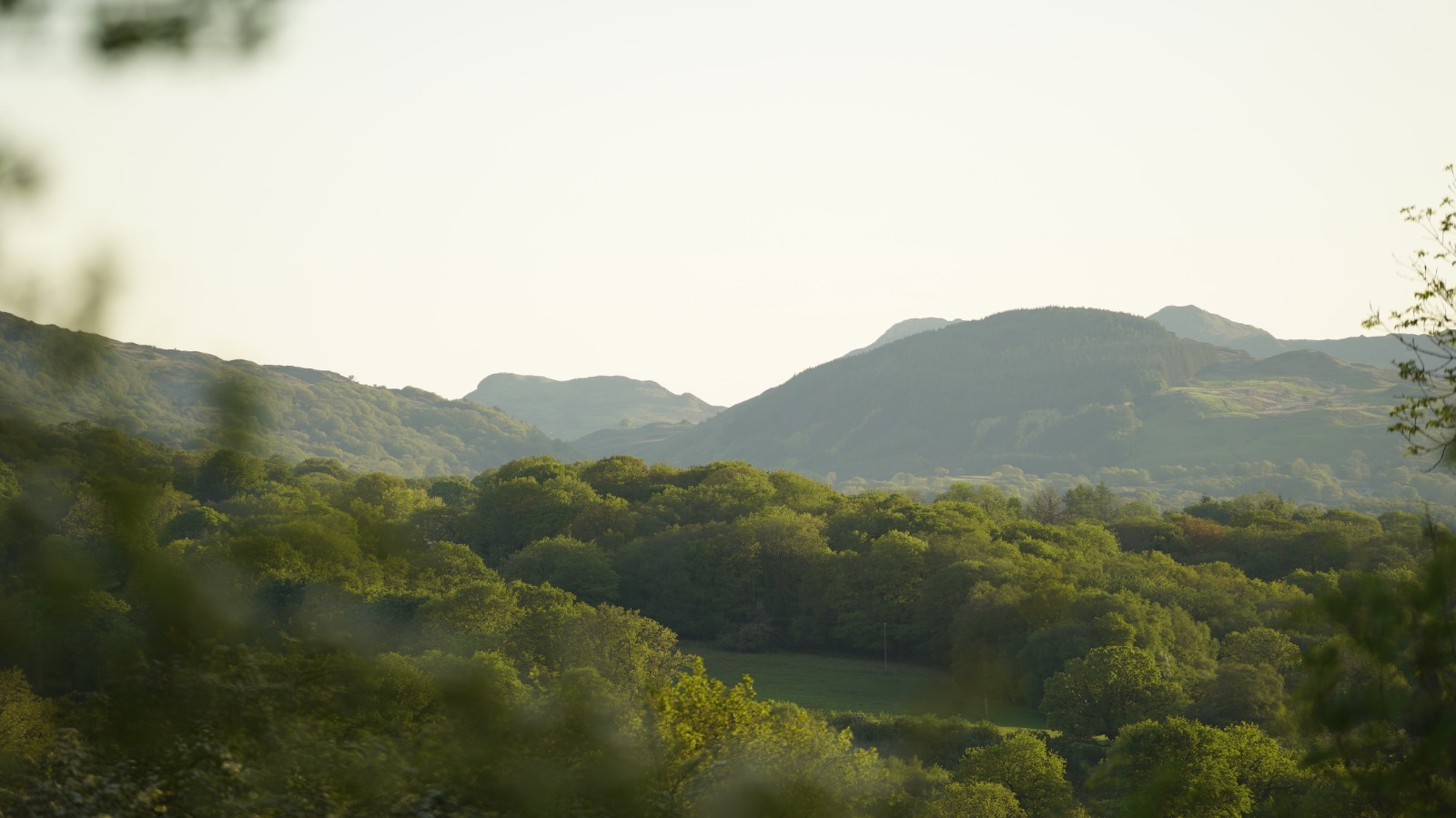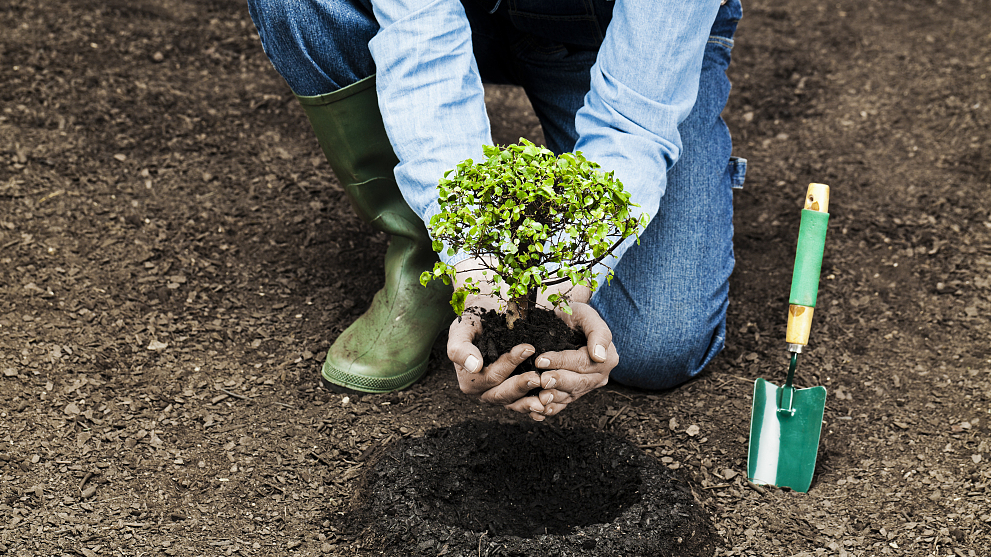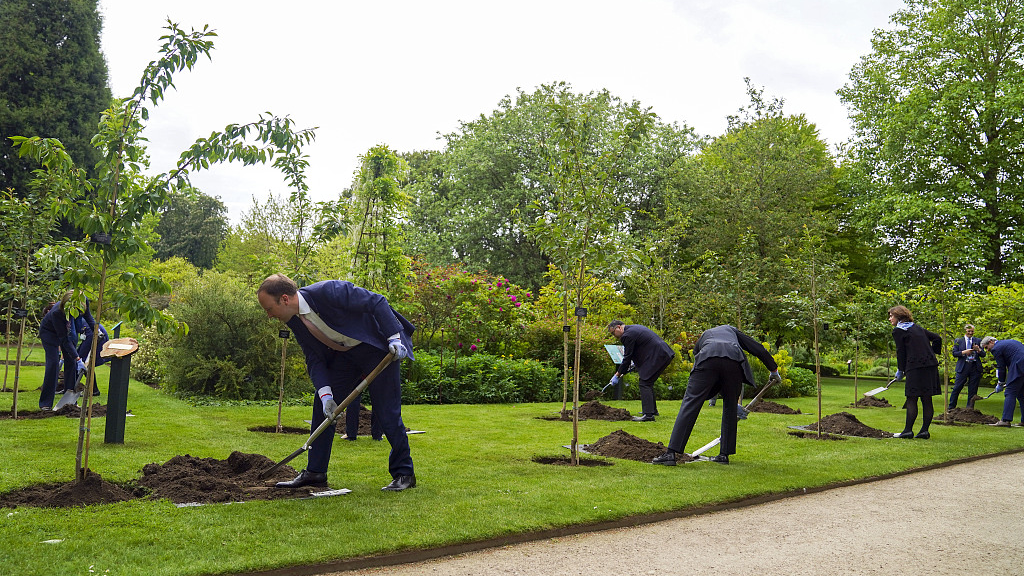As temperatures soar and irreversible changes are made to our planet, experts, governments and environmentalists are all calling for immediate action to prevent the climate crisis from getting any worse.
All solutions are being explored, including expensive and complex technology able to capture CO2 and remove it from the atmosphere but we already have available a ready-made weapon gifted to us by nature – trees.
Trees are amazing carbon sinks, able to absorb emissions and lock them up in their roots, leaves and the soil surrounding them for centuries. If the idea of planting a tree inspires you, you might be considering how to go about it. Here are some ideas to get you started.

A forest in Wales, where the government last year announced a $6.6m project to create a national forest extending across the country. /CGTN
A forest in Wales, where the government last year announced a $6.6m project to create a national forest extending across the country. /CGTN
Choosing the right tree
First of all, the most crucial question before considering planting a tree is what species to plant. The UK Woodland Trust recommends planting a native species, as local trees and plants are more resilient to the environment surrounding them, therefore making them easier to maintain.
But also choosing a local species helps prevent the spread of imported or invasive pests and plant diseases and save on carbon emissions. Species obviously vary greatly across Europe, with each tree having its specific soil, light and temperature preferences.
READ MORE
Wales offers every household a tree
UN migration report laid bare
Omicron: 'Too late' to use border controls
A good idea, according to the Woodland Trust, is to look around your neighborhood and see what species are thriving.
Another question to ask yourself is, what do you want the tree for? Trees can serve many functions - they're not only aesthetically pleasing, but some also provide fruits and shelter for wildlife and others can prevent soil erosion, reduce wind or flooding.
Consider what you'd like your tree to do for you and how long are you willing to wait to see it grow to a satisfying size, as different trees grow at different speeds.

Make sure to plant your tree on land you own and in a location that doesn't interfere with electricity cables, underground pipes or building structures. /aluxum|/Getty Creative
Make sure to plant your tree on land you own and in a location that doesn't interfere with electricity cables, underground pipes or building structures. /aluxum|/Getty Creative
When to plant a tree
This is probably the easiest rule. Planting season normally runs between November and March, when plants are dormant. If you purchase a baby tree in a pot, the compost they're sold in will protect them from the shock of being planted in new soil and this can be done all year round.
Where to plant a tree
Choosing the right space to plant a tree plays a key role in its successful growth.
First, it's important to choose a space that can accommodate the tree once it reaches its full size.
Consider how far the branches and roots of the trees might reach – you don't want to end up paying damages to a neighbor or the city's council if your plant starts destroying sidewalks and roads, or hitting parked cars (beware of pines, they're notorious troublemakers).
The Woodland Trust recommends planting trees at least 2 meters apart from each other, unless you're planting a hedge, in which case you can plant a row of trees 30 centimeters apart.
Avoid planting a tree in the shade of another tree, or under another plant – you don't want plants to have to compete for access to light and water.

Politicians have been getting in on the act as G7 health ministers planted trees at the Oxford Botanic Gardens in June. /Steve Parsons/WPA Pool / Getty Images
Politicians have been getting in on the act as G7 health ministers planted trees at the Oxford Botanic Gardens in June. /Steve Parsons/WPA Pool / Getty Images
How to care for your tree
Planting a tree can be a legacy to the planet.
While your tree is growing, the Woodland Trust recommends to be wary of weeds, keeping a 1 meter diameter around the tree clear for the first two to three years to reduce competition for moisture and nutrients.
If you can, avoid pesticides – but if you must use them to protect your young plant from weeding, make sure to follow best practice standards.
Watering shouldn't be necessary as long as there are no long dry spells, says the Woodland Trust. Your young tree should adapt to its normal environmental circumstances.
After the third year, occasional pruning and pest control might be needed for your plant, but your tree should be strong enough to continue growing with less attentive care.

